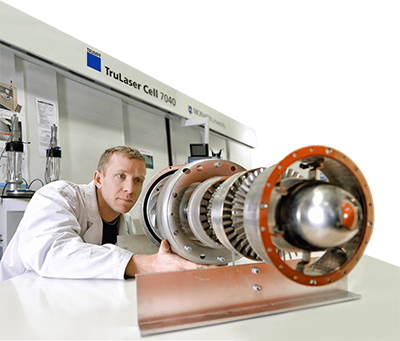Australian 3D engine printer exports technology to France
THE Australian team which created the world-first 3D-printed jet engine has launched a new venture to manufacture components for a leading French aerospace company.
Melbourne-based start-up Amaero Engineering and partner Monash University have signed an agreement with global aerospace and defence company Safran to print turbojet components at its factory in Toulouse, France. Toulouse is a major European aviation aerospace hub and the headquarters and final assembly line for Airbus. 
Amaero’s 3D printing technology produces lighter and stronger aircraft components more easily and with greater speed than traditional manufacturing techniques.
“This is a great example of an Australian business with highly-specialised advanced manufacturing capability,” Australian Innovation, Industry and Science Minister Greg Hunt said.
“The company has collaborated with a leading university and made the leap from the lab to the heart of the global aerospace industry.”
The Australian Government supported the initial stage research and development of the 3D-printed jet engine components through the Advanced Manufacturing Cooperative Research Centre and Australian Research Council funding. CSIRO and Deakin University also participated in the original engine printing project.
Amaero was subsequently established as a spin-out company from Monash University to commercialise the technology using funding and expert advice from the Australian Government’s Entrepreneurs’ Programme.
Mr Hunt said, “Collaboration continues to be key to the company’s success, it works closely with the university’s Monash Centre for Additive Manufacturing, combining world-leading research capability with business acumen and global industry connections.”
Amaero will establish a new additive manufacturing facility within Safran’s factory, including relocating two large laser melting machines customised for this precise manufacturing task.
Full production is expected to commence in early 2017 following testing and validation phases, and the components will be used in civil and military aircraft. 
“This exemplifies the kind of global success that the Turnbull Government’s National Innovation and Science Agenda will help grow by providing support for innovation,” Mr Hunt said.
“This in turn creates high value, high wage jobs that help to secure Australia’s future economic prosperity.”
ends

 How to resolve AdBlock issue?
How to resolve AdBlock issue?